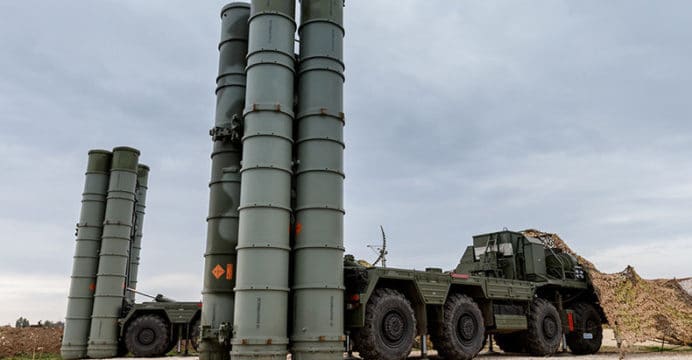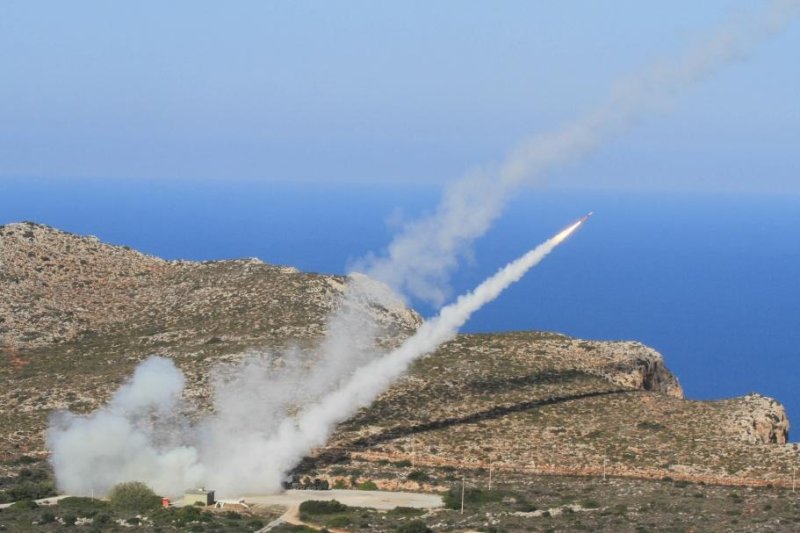timepass
Brigadier
QATAR REPORTEDLY PLANNING TO PROCURE S-400 SAM FROM RUSSIA

The Russian news agency reports that Qatar is in talks with Russia for the purchase of Almaz-Antey S-400 Triumf long-range surface-to-air missile (SAM) systems.
In an interview with TASS, Qatar’s Ambassador to Russia Fahad bin Mohammed Al-Attiyah stated that the two countries were in “advanced negotiations” regarding the S-400.
This news follows a memorandum-of-understanding (MoU) by Qatar and Russia in October 2017, in which a provision was made to discuss air defence systems (without specific details).
Qatar is the third country in the Arab Gulf region expressing interest in the S-400, following and . The S-400 is emerging as Russia’s entryway into markets traditionally dominated by U.S. and European suppliers, with Turkey being the first to formally .
The S-400 comprises of the 40N6 (400 km), 48N6 (250 km), 9M96E2 (120 km) and 9M96E (60 km) SAMs, which collectively enable the S-400 to operate as a multi-layer air defence system. Following China, which has begun receiving its order, Turkey signed on as the second firm buyer of the S-400.
Notes & Comments:
Doha’s defence modernization roadmap is involving both the replacement of old equipment as well as an expansion – both quantitatively and qualitatively – of its capabilities.
This is most pronounced in the Qatar Emiri Air Force’s (QEAF) fighter procurement plans, which include 36 Dassault Rafale, 36 Boeing F-15QA and 24 Eurofighter Typhoon twin-engine multi-role fighters. Besides multiplying its present fighter fleet eight-fold (from 12 Dassault Mirage 2000-5), the QEAF is constructing a fleet of clearly longer-range, higher-endurance, heavier-payload and technology more capable fighters.
Seeing the probable logistics and maintenance challenge, analysts point to Doha’s push to award lucrative deals to various industry leading vendors in major countries, such the U.S., U.K., France, Germany, Italy, Turkey and – should the S-400 deal come to fruition – Russia. To what extent Qatar yields foreign relations cache from these countries is unclear, but at least in the case of the Typhoon (i.e. U.K.), the Royal Air Force would form a ‘Joint Operation Squadron’ with the QEAF. In other words, the RAF will be present in Qatar.
Nonetheless, the induction of these weapon systems will amount to a sizable boost for the Qatar Armed Forces. Granted, Doha will have to overcome supply challenges, not least the number of trained personnel necessary to effectively operate its equipment.

The Russian news agency reports that Qatar is in talks with Russia for the purchase of Almaz-Antey S-400 Triumf long-range surface-to-air missile (SAM) systems.
In an interview with TASS, Qatar’s Ambassador to Russia Fahad bin Mohammed Al-Attiyah stated that the two countries were in “advanced negotiations” regarding the S-400.
This news follows a memorandum-of-understanding (MoU) by Qatar and Russia in October 2017, in which a provision was made to discuss air defence systems (without specific details).
Qatar is the third country in the Arab Gulf region expressing interest in the S-400, following and . The S-400 is emerging as Russia’s entryway into markets traditionally dominated by U.S. and European suppliers, with Turkey being the first to formally .
The S-400 comprises of the 40N6 (400 km), 48N6 (250 km), 9M96E2 (120 km) and 9M96E (60 km) SAMs, which collectively enable the S-400 to operate as a multi-layer air defence system. Following China, which has begun receiving its order, Turkey signed on as the second firm buyer of the S-400.
Notes & Comments:
Doha’s defence modernization roadmap is involving both the replacement of old equipment as well as an expansion – both quantitatively and qualitatively – of its capabilities.
This is most pronounced in the Qatar Emiri Air Force’s (QEAF) fighter procurement plans, which include 36 Dassault Rafale, 36 Boeing F-15QA and 24 Eurofighter Typhoon twin-engine multi-role fighters. Besides multiplying its present fighter fleet eight-fold (from 12 Dassault Mirage 2000-5), the QEAF is constructing a fleet of clearly longer-range, higher-endurance, heavier-payload and technology more capable fighters.
Seeing the probable logistics and maintenance challenge, analysts point to Doha’s push to award lucrative deals to various industry leading vendors in major countries, such the U.S., U.K., France, Germany, Italy, Turkey and – should the S-400 deal come to fruition – Russia. To what extent Qatar yields foreign relations cache from these countries is unclear, but at least in the case of the Typhoon (i.e. U.K.), the Royal Air Force would form a ‘Joint Operation Squadron’ with the QEAF. In other words, the RAF will be present in Qatar.
Nonetheless, the induction of these weapon systems will amount to a sizable boost for the Qatar Armed Forces. Granted, Doha will have to overcome supply challenges, not least the number of trained personnel necessary to effectively operate its equipment.









